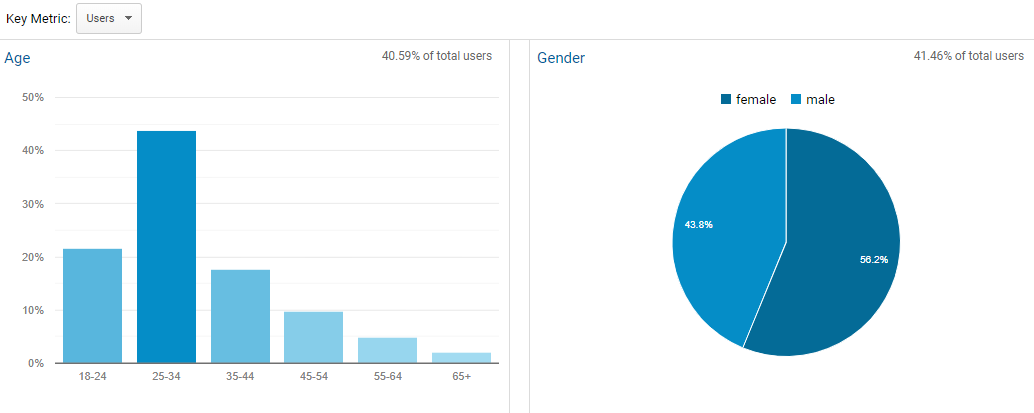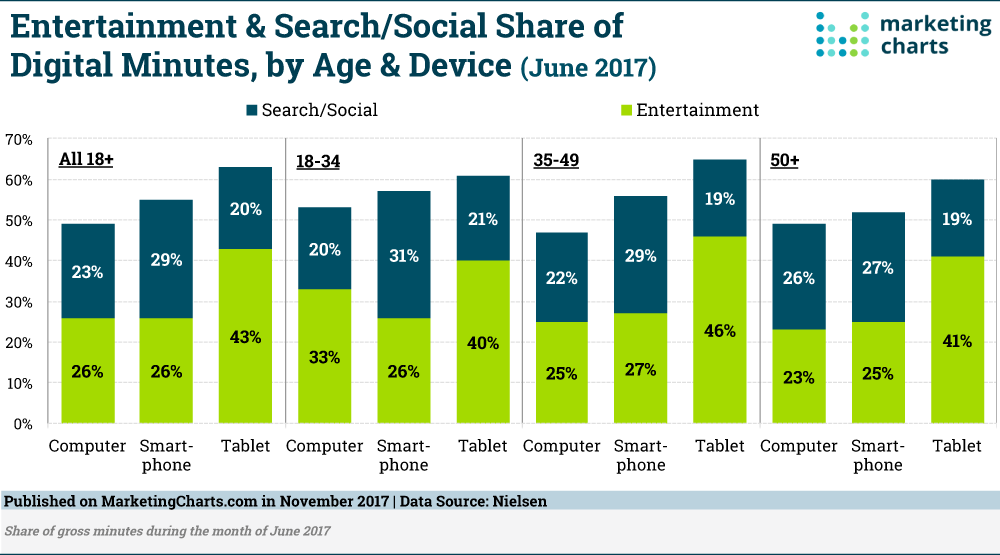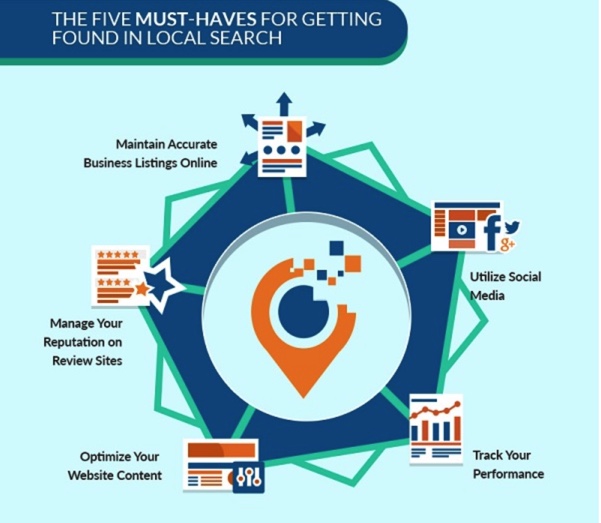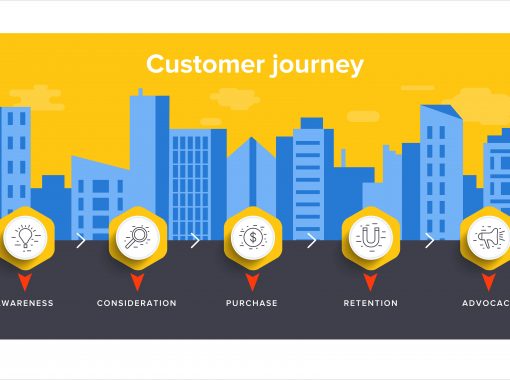
The Basic Essentials of Effective Content Marketing in 2020
Sixty percent of marketers create at least one piece of content per day. How often you’ll need to create or distribute content will depend on the nature of your business, the expectations of your intended audience, and other factors unique to your marketing needs.
Sorting through all these factors isn’t always an easy task. Nevertheless, the first step is to get back to the basics of content marketing to help prepare your content strategy.
This is why content marketing newcomers and even experienced marketers, business owners, and content writers can benefit from a review of what matters most when it comes to preparing and presenting marketing-related content.
This guide on content marketing basics tells you what’s relevant and effective now and what’s likely to matter as you put together your content marketing game plan for 2020. Read on to discover the essential features of a smart, well-rounded content marketing strategy.
Goals and Objectives
No content marketing strategy in 2020 or any other year is going to be effective if it’s not goal-driven. Why is this so important? For starters, the marketing content anyone is exposed to at any given time is never random.
Even the ads most people skip as soon as they can on YouTube are delivered to selected video viewers based on information collected from YouTube user data. Plus, you never want to throw content out there just for the sake of giving your audience “something.”
Make content marketing useful in 2020 by setting your objectives before you do anything else. Do this by asking yourself the following questions:
What do you want your content to do?
Is your goal to drive conversions?
Do you want to raise brand awareness?
Is your goal to be considered an expert in your niche?
There are different content marketing strategies for each of these objectives – which is why you can’t move beyond this point until you can fully and confidently answer this question.
Who do you want to view your content?
Put yourself in the place of the person you want to read your content. What comes to mind? The mental image you get will help you determine your preferred target content viewer.
How is your target audience going to access your content?
Not everyone prefers to view website content. Gen Xers and millennials, for example, spend most of their time on social media platforms. If this is your target audience, you may want to make social media content a top priority.
Research
Research is always going to be a content marketing basic to ensure you have a full understanding of your target audience and how they prefer to interact with your content. The good news is there’s no shortage of online user data.
From social media alone, you can break down your target audience by factors such as geographic location, salary range, and shopping habits. You can even use your data to put together a customer/buyer/shopper persona to further develop an understanding of your target audience.
At the very least, the research involved to better know your target audience should include the following tidbits of info:
- Age and gender
- Location
- Education level
- Online content habits related to your business, niche, products, or services – e.g., whether your target audience mostly prefers to view the content directly on your website, or if they prefer to indirectly get to relevant webpages (from social media platforms, blog post links, paid ads, banner ads, etc.)
- Personal preferences (based on things like social media activity, like and share habits, pages that are viewed most often on consumer-based websites, etc.)
Research of this nature is just a starting point. As you move forward with a new content marketing strategy or fine-tune an existing one in 2020, you’ll want to keep gaining new and relevant details about your target audience so you can prepare and present the right content.
Purpose-Driven Content
You do want to keep basic SEO techniques in mind as you create your content for 2020 and beyond to help searchers find what you are dishing out content-wise. But your content still needs to be prepared with actual humans in mind and not just search engines. An argument can be made that it’s even more important to create purpose-driven marketing content. Generally, this type of content can be described as:
- Informative: With content of this nature, you are educating your audience in some way.
- Helpful: Most consumer-based content solves some type of problem for the searcher. What’s usually included on product and service pages is a good example of “helpful” content.
- Compelling: Compelling content gives searchers a reason to check out what your content is all about. It’s also what inspires sharing, commenting, and other good stuff.
Just be aware that content is more likely to be considered engaging in 2020 if it isn’t excessively salesy. Even if your ultimate goal is to generate conversations and boost your revenue, you’ll still want to provide something useful and relevant.
One way to find the right content marketing mix is with the 80-20 rule. This means 80 percent of your content should be informative and the other 20 percent can be sales-focused.
Content Scheduling
Another major content marketing basic for 2020 involves scheduling. This simply means content needs to be published consistently to encourage engagement and maintain interest.
Disney Parks, Red Bull, and BMW are among the top brands with a highly visible and consistent online presence. Each one of these companies knows exactly when to present content based on a schedule that’s right for their brand.
Nevertheless, manually keeping track of your content only makes sense if the online part of your marketing strategy is minimal or limited to a very specific local area. Otherwise, you’ll be better off using a content calendar to track and schedule content for social media posts, blogs, emails, paid ads, and any other sources of content distribution relevant to your brand.
Also, maintaining an accessible content schedule helps keep everyone on your team responsible for producing content on the same page. Doing so can also reduce issues with duplicate content and avoid oversights that could leave your email recipients or social media followers wondering if you’ve forgotten about them.
Multimedia Elements
Nearly 60 percent of all social media links are shared without being clicked on. This is the main takeaway from a study that essentially confirms most people make content-related decisions based on headlines.
So, carefully worded text is still going to be important in 2020 since this is what makes compelling headlines effective. Still, searchers also expect more diversity with what they find when they do actually click on a headline.
Most people love to see a nice mix of multimedia elements within the content they view and share. Video content, in particular, is a content marketing basic for 2020 because the human brain tends to respond much better to visual content than text.
With emails, for example, an initial email with a video included increases the click-through rate by as much as 96 percent! Additional multimedia components that can make your content pack more punch include:
- Infographics
- Photos
- Customized images
- Audio files
- Graphs and charts
On a related note, consider mixing things up with the actual forms of content you present in 2020. For example, you might experiment some with listicles, or you might present surveys to gather customer insights about your products and/or services.
Engagement Prompts
An engagement prompt is anything included in your content that gives the person reading or viewing it an added “push” or reason to take some additional action. Engagement prompts are especially useful when you don’t just want your content viewers to be passive.
For instance, you might wrap up a blog post by asking for comments. With social media content, questions tend to be an effective engagement prompt. Even something as simple as asking “Do you agree?” or “What do you think?” at the end of a post can inspire a slew of comments.
And calls-to-actions are considered engagement prompts since you are telling your audience exactly what it is you want them to do next. CTAs have the power to spark all sorts of engagement if you use the right wording in your content. Possible actions you could encourage with a CTA include:
- Website visits
- Phone calls to your business
- Passing a certain piece of content along to friends
- Leaving comments
- Requesting additional information
Engagement prompts can also help you out with other aspects of your content marketing strategy for 2020. For instance, a prompt to sign up for your email newsletters can be used to build or improve your email mailing list.
The Right Social Media Channels
Roughly 45 percent of the world’s population uses social networks today. So, it shouldn’t be a surprise that social media is one of the content marketing basics for 2020.
What matters most with social media, however, is choosing the right channels for your needs and goals. If the goal is to reach as many people as possible while still being able to focus on very specific users, Facebook is a good choice.
But if you are aiming for a younger audience, you might do better with Instagram. If you have a highly visible brand and you want to produce and share a lot of visual content, however, you might see better results with Pinterest and YouTube as your go-to channels.
If your brand is business-focused or strictly B2B, then LinkedIn is worth considering. However, younger and middle-aged business professionals sometimes prefer Twitter over LinkedIn, so gauge your decision on what you know about your target audience.

Local Content
More than 80 percent of consumers report using their devices while in stores. This is often done to find related content about the store itself – e.g., current sale items they may not be aware of, coupon codes they can use at the register, etc. – or the products being sold there.
Local content is any type of content produced with a specific geographic area in mind. Now, this won’t necessarily be as specific as aisle seven in your store, but you get the idea. Although, social media check-ins can be an effective way to know when to distribute content to local customers as they get into your store!
The easy way to make sure you’re all set up for local marketing in 2020 is to create a Google My Business account if you don’t already have one. Once you make it easier for searchers to find your business online, your content marketing strategy can be “localized” in the following ways:
- Using geo-specific keywords (“Miami swim supply shop”)
- Making references to specific neighborhoods, towns, or landmarks in your content
- Using geo-specific elements in your content, like a map that shows the location of your business
- Posting blogs or social media posts referencing local events your business may be involved with or support
- Claiming your business on local business directories to make it easier for customers in your target area(s) to post reviews – local reviews are a highly effective form of local content!
- Including local images or videos in your content
Analytics (a.k.a. ‘Results Tracking’)
The last but not least content marketing basic for 2020 is analytics. This can also be referred to as “results tracking” since that’s essentially what you are doing when looking at the available data that’s related to your content.
If you don’t know how your content is performing, you won’t know what’s producing the desired results and what needs some attention. There are many tools you can use to track your content-related results, but a good starting point is Google Analytics, which gives you access to customized reports and other handy features.

The content-related data that matters most to you will depend on factors such as what type of content you are producing and what goals you have for it. The major KPIs that tend to matter most include:
- Time spent on pages
- Click-through rates (CTRs)
- Bounce rates
- Acquisitions/conversions
- Page views
- Organic and paid traffic
- Social media and mobile traffic
- Landing page conversion rates
Of course, there’s one content marketing essential fact that will always need to be kept in mind – the basic necessity to produce quality content that’s meaningful to whomever you want to read it. What tends to change most over time is the way content is viewed.
Still, each one of the basics discussed above isn’t entirely independent of the others. Ultimately, you’ll benefit most from a content marketing strategy that’s comprehensive, flexible, and audience-focused.
Ken is a freelance writer currently living in the Pittsburgh area of Pennsylvania. Born in California, his fondness for writing dates back to elementary school writing contests and led to positions on both high school and college newspapers. He earned a degree in Journalism and Communications from Point Park University and did work in data entry after college before transitioning to a full-time career as a freelance writer. While his areas of expertise are marketing and health-related content, Ken is a versatile writer and enjoys exploring and researching a variety of topics. When not busy knocking out articles, he likes to spend time with friends, go for walks, and discover new and exciting things about the world around him.














